Avalanche Beacon
Function Check
How To Do An Avalanche Beacon Function Check
When going out backcountry skiing or riding, one should always do an avalanche beacon function check to ensure everyone is searchable and able to search. Below is a great video created by three IFMGA Guides on how to do a simple and concise avalanche beacon function check.
3 Part Check
1. Battery and Display
Margaret has Mark and Jeff turn on their avalanche beacons, check their displays for any cracks or malfunctions, and then verbally read out their battery percentage.
2. Search Function
Margaret has Mark and Jeff switch their beacons to Search mode (while she stays in Send) and take a step or two back. Then she has them read out their numbers on the digital display to ensure that their numbers go down as she moves her beacon closer.
3. Send Function (Transmit)
Jeff and Mark switch back to Send and stow their beacons appropriately (in the provided harness and below a layer or in a pocket) and at least 30cm (1 foot) away from any other electronic devices like a cell phone. Then she switches to Search and confirms that she can get their individual signals. Margaret then goes back to Send mode and stows her beacon appropriately. “End in Send.”
DBEST Function Check
If you’re an acronym person you can use DBEST in order to remember all the parts of a beacon function check.
Display – is not cracked and working appropriately.
Battery – is at least over 50% or per manufacturers recommendation.
Electronics – are at least 30cm away in Send mode and 50cm away in Search
Search – Everyone is able to find a signal transmitting at the international standard of 457kHz.
Transmit – Everyone is producing a signal at 457kHz.
Do It Every Time
There you have it. Just make sure you do this before you leave the parking lot or TH so you can troubleshoot any issues before you’re in the backcountry. Curious about how to actually use your beacon to perform an avalanche rescue? Check out our blog on Single Burial Avalanche Rescue. Taking an Avalanche Rescue or AIARE Level 1 Course are great ways to get hands-on knowledge and mentorship from professionals.
Want to learn more online? Check out our Ultimate Guide to Backcountry Skiing.
Single Burial Avalanche Rescue
Single Burial Avalanche Rescue
Obviously, the best way to avoid a rescue is to avoid the avalanche all together. Take an Avalanche Course to be proactive and learn how to avoid avalanches. That said, even the most trained professionals can still make mistakes, so everyone traveling in the backcountry should understand how to execute a rescue. At the least, you could help save someone else’s life. Below are the steps to follow if ever you need to perform an avalanche rescue of a single victim.
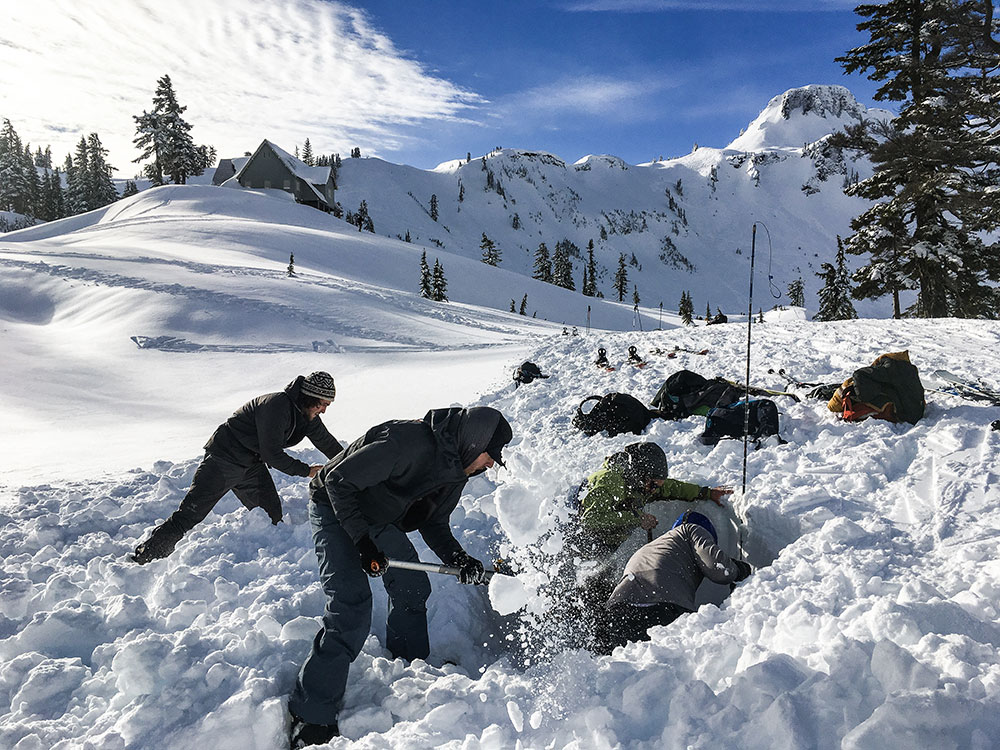
Avalanche Rescue Checklist
Step 1. (You’re number one). STOP! ASSESS SAFETY! ENSURE NO FURTHER HAZARD
-Risk of second avalanche?
-Hangfire?
-Move to defined safe location
Step 2. CHOOSE A LEADER
-Delegate Tasks
Step 3. HEAD COUNT
-How many missing?
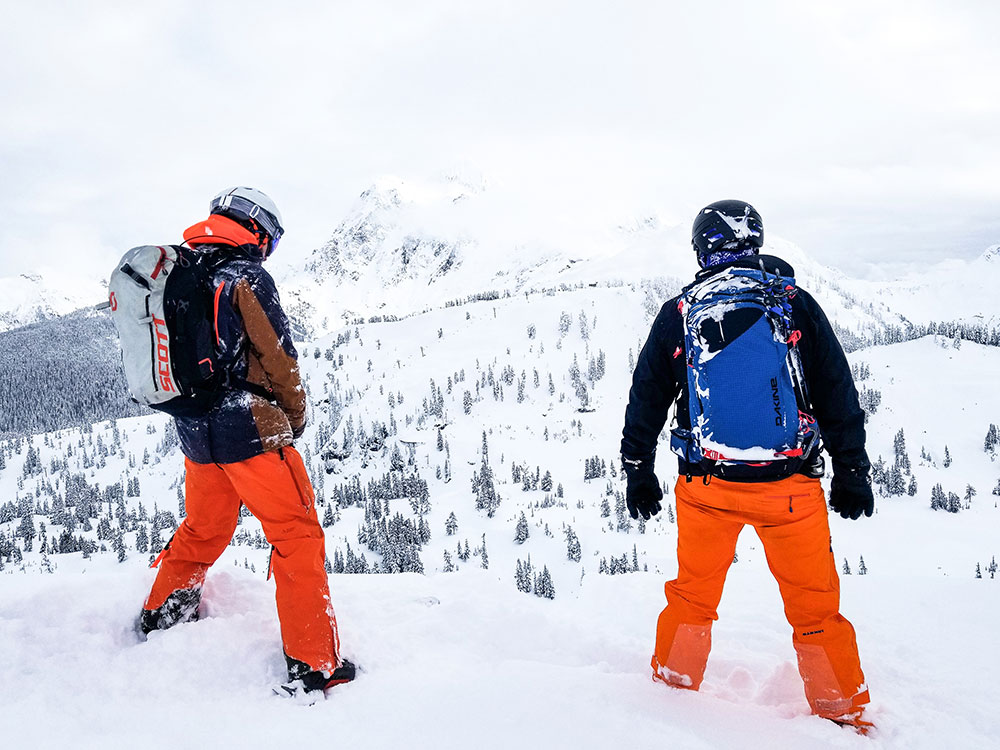
Step 4. CALL FOR HELP
-Others nearby who can help?
-(911) Location, nature of emergency, name, # in group, # missing
Step 5. SWITCH ALL TRANCEIVERS TO SEARCH MODE
-Check that no tranceivers are transmitting
Step 6. DETERMINE WHERE TO SEARCH
-Below point last seen
-In line with visual clues
-Areas of debris, especially terrain traps
Step 7. SEARCH FOR VISUAL CLUES
-Enter debris from side or toe of path
-Search strips 40m apart (About 40 strides)
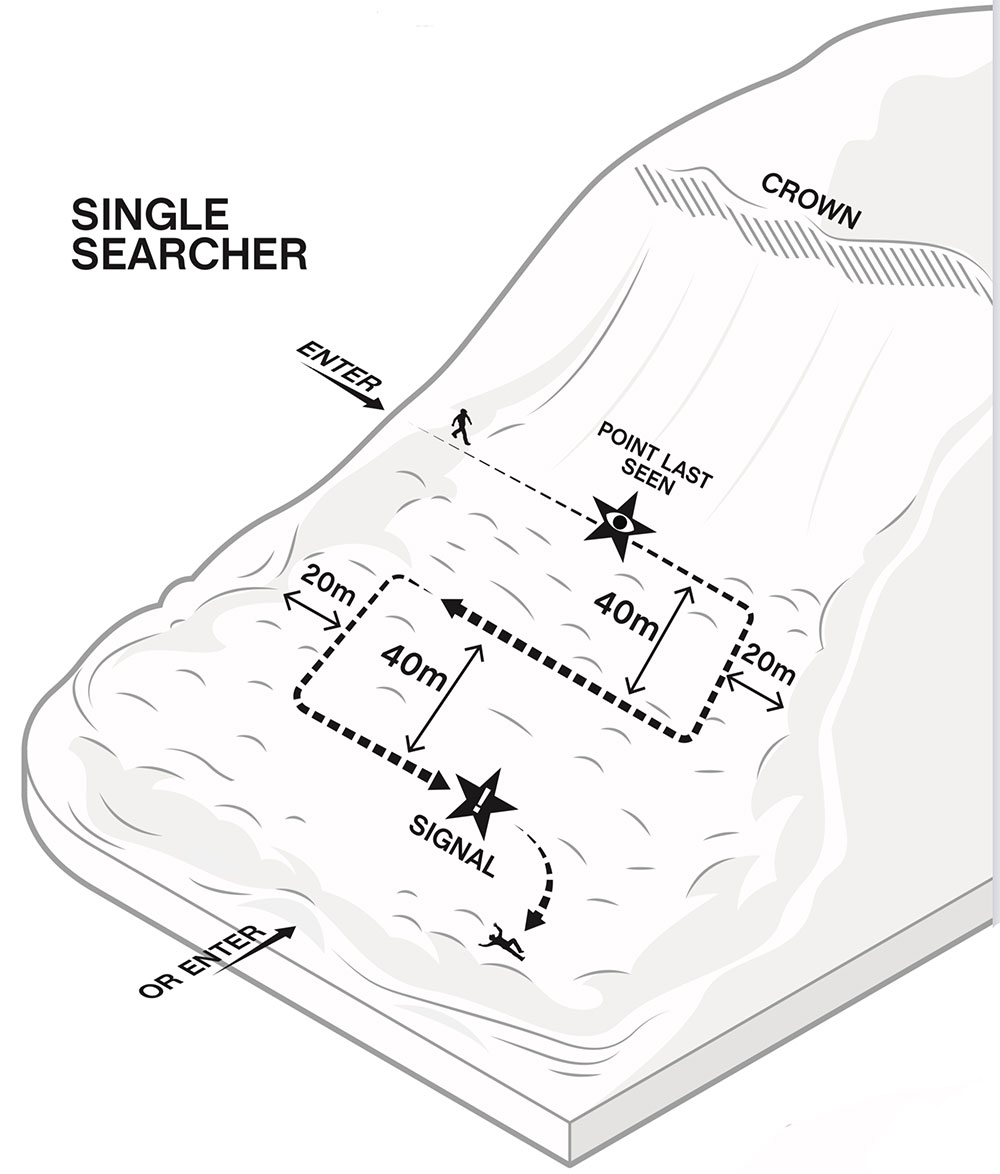
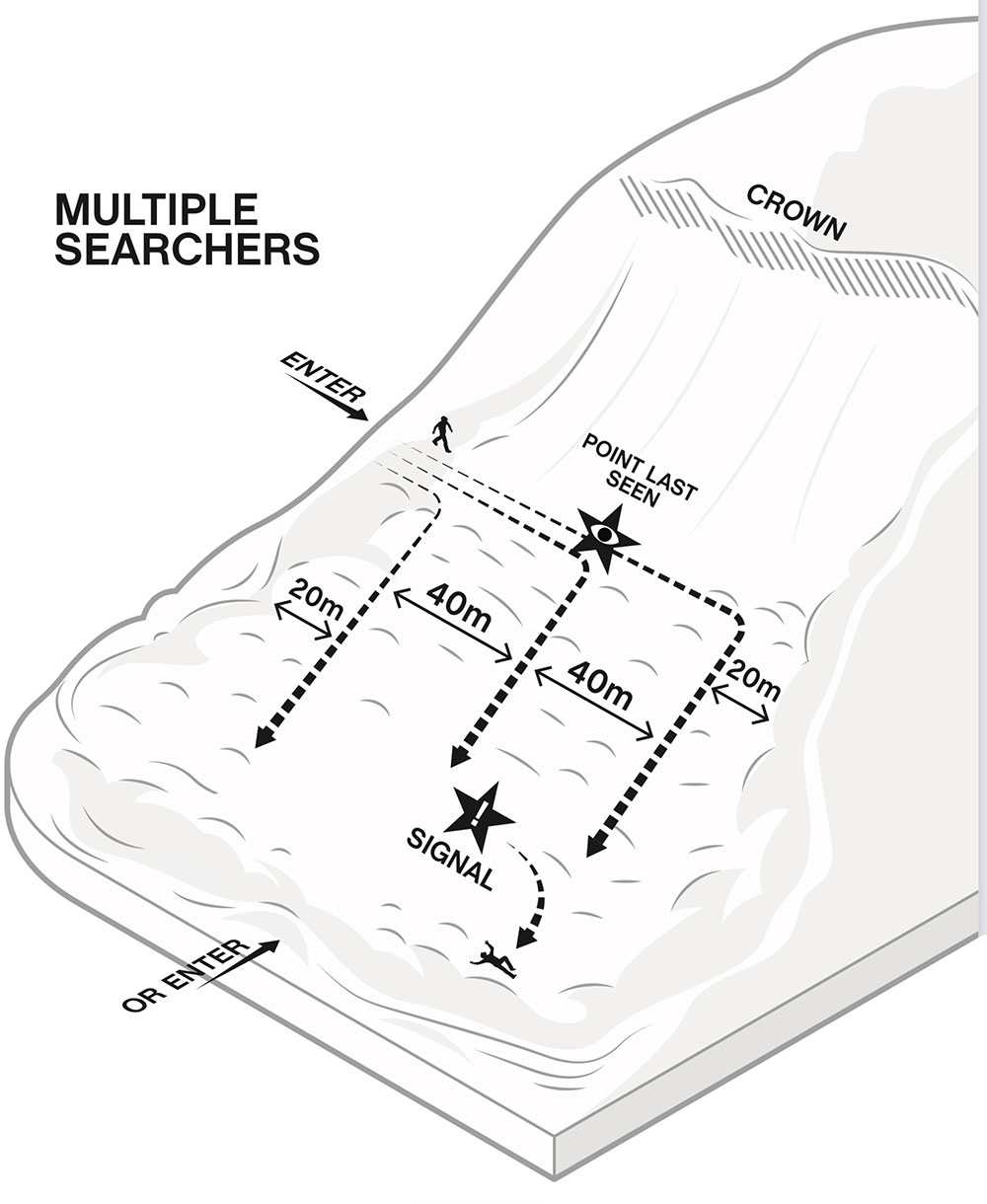
Step 8. YELL TO OTHERS WHEN YOU FIND A CLUE OR RECEIVE A SIGNAL
-Pull clue out of snow and lwave on snow surface
-Put marker in the snow where you begin to follow signal
-Call to other searchers not following signal to assemble probe and shovel
Step 9. FOLLOW SIGNAL TO BURIAL AREA
-Slow and precise as you approach 10m
-Keep tranceivers near the snow surface during final approach (Crawling at 3m)
-Around 5m, place a marker on the snow that points along the approach trajectory
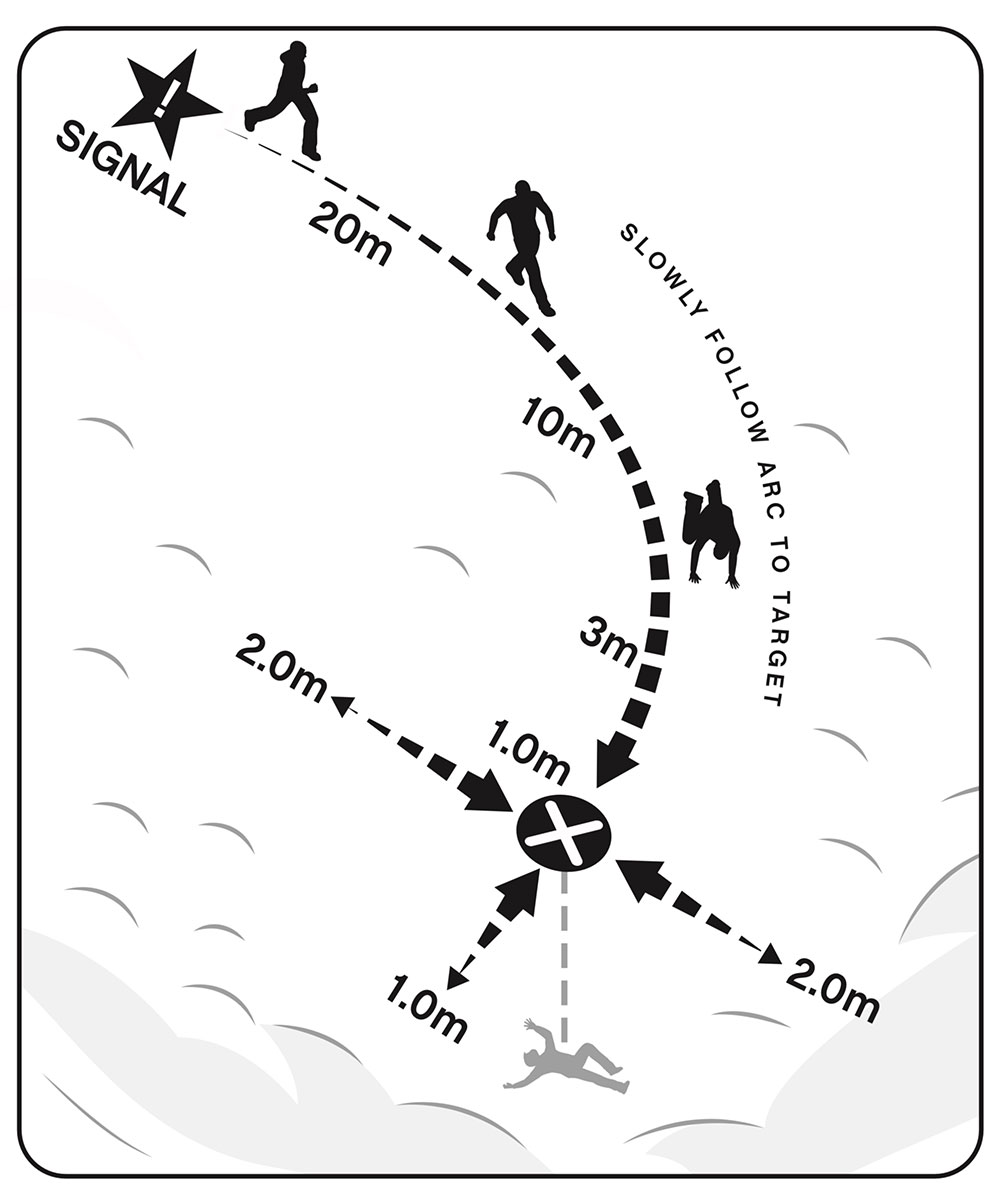
Step 10. LOCATE BURIAL WITH TRANCEIVER AND PROBE
-If possible, 2nd searcher PROBES LIKELY BURIAL AREA in front of tranciever searcher’s trajectory until closest signal located
-Locate the closest transceiver signal by bracketing ahead/behind and to the sides, maintaining consistent transceiver orientation
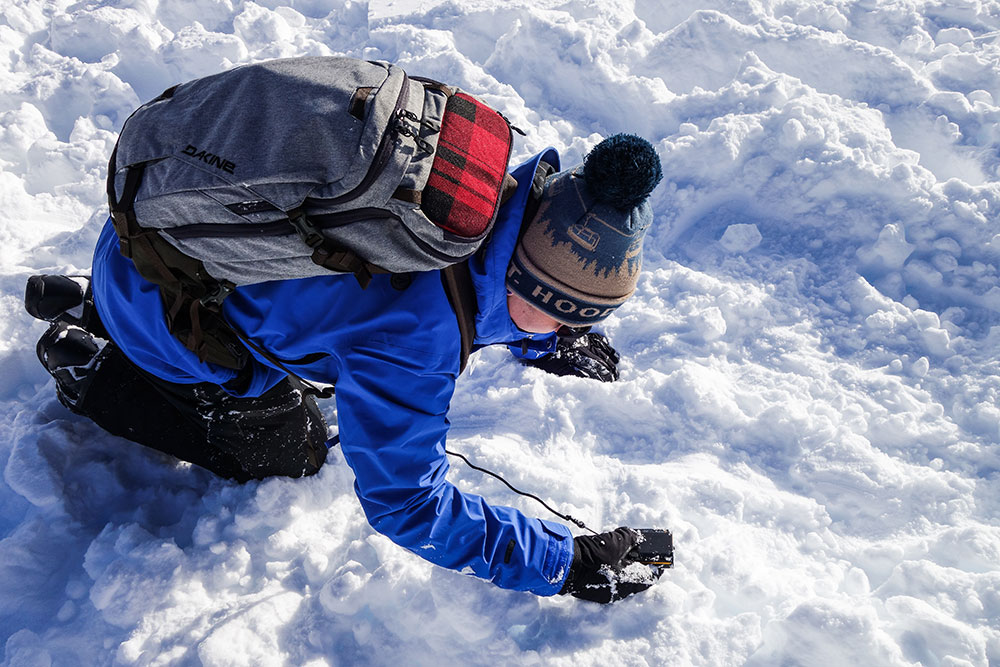
-Pinpoint using the probe, from the center of the closest signal outwards in a circular pattern
-Probe strike = victim location. LEAVE PROBE IN PLACE!
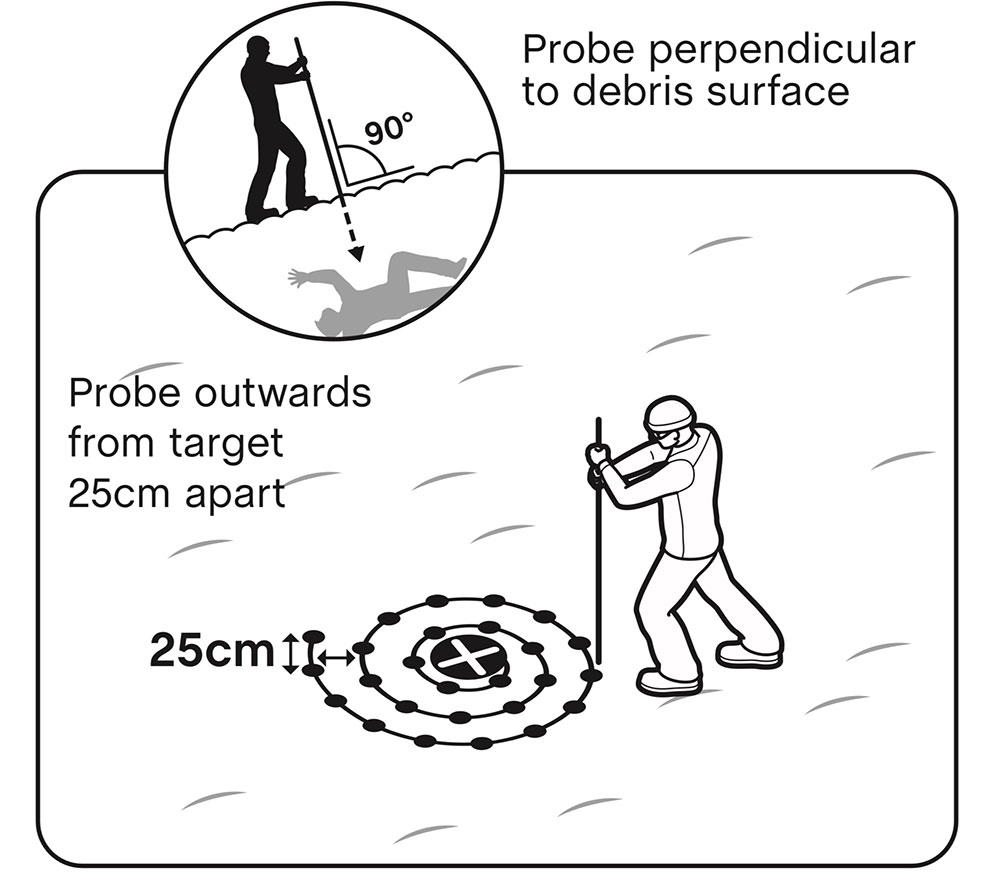
Step 11. SHOVEL FAST AND EFFECTIVELY
-Start with a large step downhill and away from the probe, 2 or more steps if deep burial
-Dig towards the probe; throw snow far away
-CHANGE SHOVELERS OFTEN (if other available)
-Careful shoveling as you reach your buried companion
-Expose face immediately in order to get airway
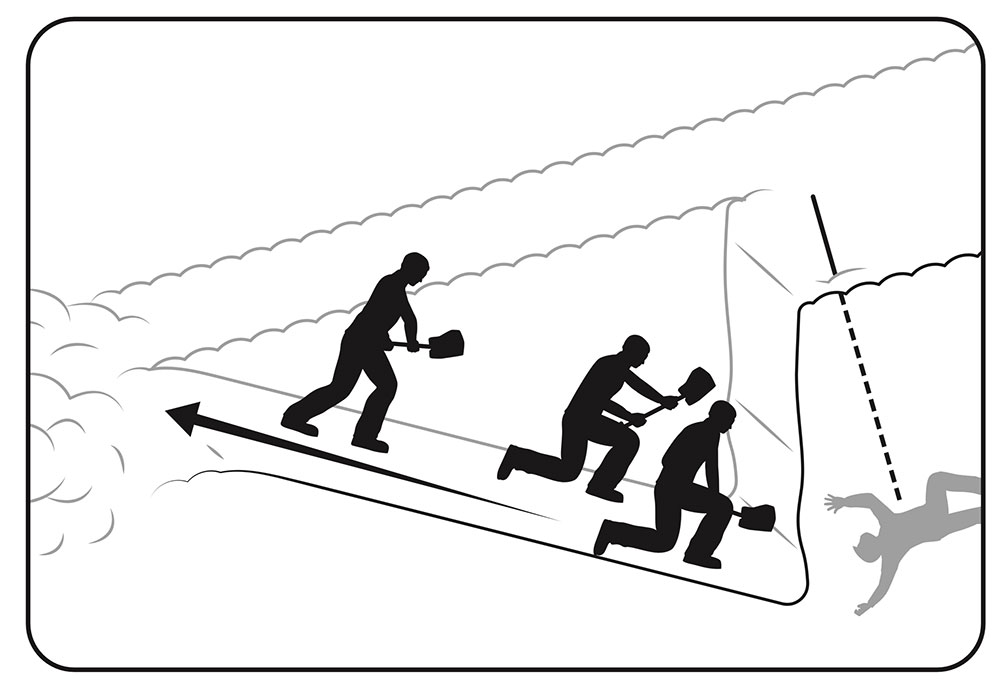
Learn more about Strategic Shoveling Techniques.
Step 12. PATIENT CARE
-Clear airway
-Provide First Aid or CPR as required
-Move to safe terrain
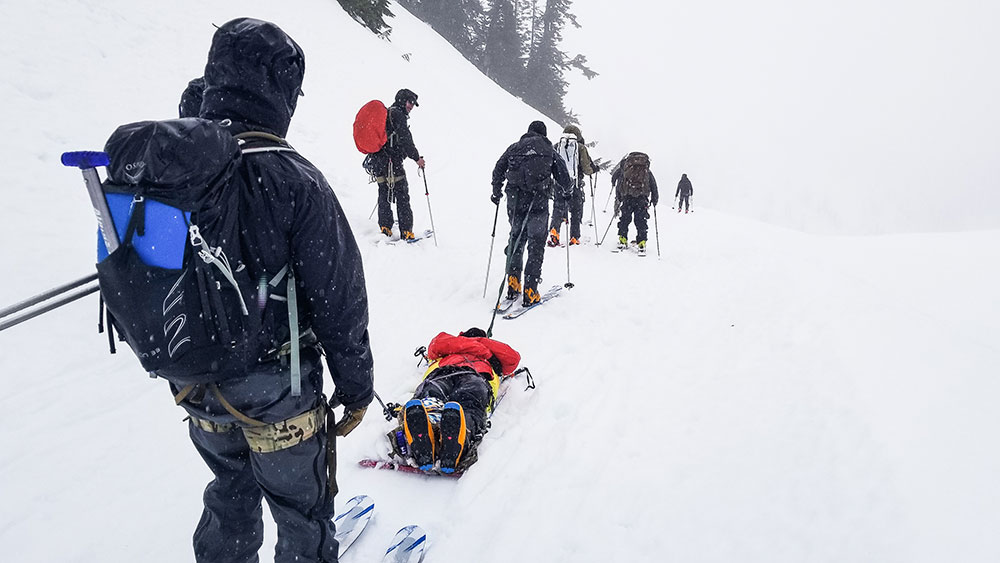
-Plan evacuation and follow up on call for help
Consider taking a Wilderness First Aid or Wilderness First Responder Course.
IF HELICOPTER COMES TO YOUR AID
-Secure loose items so they do not blow away
-When heli lands, wait for rescuer to come to you
Summary
It takes a lot of practice to get good at rescue and, even once mastered, is a perishable skill. Stay fresh on the most up to date practices and advances in the industry by taking an Avalanche Rescue Course at least every other year. Below is a great video put out by BCA that summarizes beacon searching well. Skip to 2:34 to get the most useful info.
Want to learn more? Check out our Ultimate Guide to Backcountry Skiing.